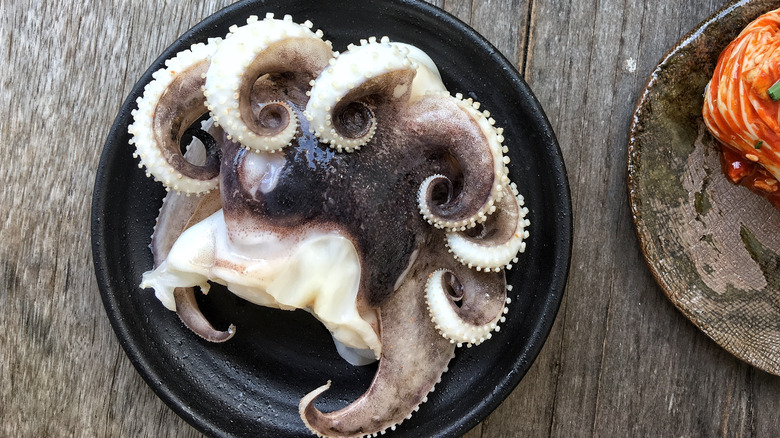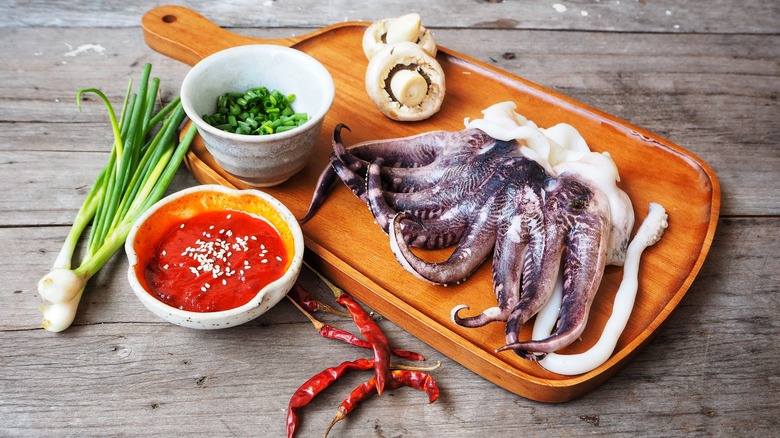Why Sannakji Is So Dangerous To Eat
The possibility of death doesn't always stop people from eating risky foods: maggot cheese, still-beating cobra hearts, toxic blowfish, blood clams ... the list goes on and on. To be clear, these foods can be perfectly safe to consume if collected from controlled environments and prepared correctly; and there's always that chance you might get very sick or die if even the most common foods aren't handled properly (via Food Beast). But some foods carry an extra level of risk, as they are more difficult to prepare than your average jar of cashews.
In addition to carrying salmonella, many fish can carry parasites, viruses, and toxic amounts of heavy metals, according to The Health Site. However, that doesn't stop people from eating seafood. It shouldn't be too surprising to hear that people also eat octopus, and one Korean dish called sannakji serves it still alive and moving (via Gastro Obscura). According to Falafel and Caviar, the practice of eating live seafood also occurs in other Asian countries like Japan. However, it is crucial that the fish are prepared in a way that makes it safe to consume. The same is true of sannakji, and one thing makes the dish particularly dangerous.
Watch out for the tentacles
We're used to seeing calamari on seafood menus, but that looks very tame next to sannakji, the Korean dish made with live octopus. It is sliced up into pieces and served right away, Food & Wine reports, and is still moving as it is consumed. That's why sannakji is also known as "wriggling octopus." This clearly may not be the dish for squeamish diners.
But if you think sannakji sounds great, take a moment to consider the tentacles — and then consider the suckers on those tentacles. According to Insider, a number of people have died eating sannakji because the suckers stuck to the inside of their throats, causing them to choke.
However, if prepared correctly, this dangerous dish can be safe to eat. Insider detailed the process, explaining that first the mucus is removed from the tentacles. The chef then cuts the tentacles into very small pieces so they will not cause an obstruction in diners' throats. When prepared this way, the choking hazard of the dish is minimized and the sannakji is ready to be served.
Aside from the safety risks, though, there's another reason many will avoid eating sannakji or other live animals, and that's animal cruelty. Octopi are able to feel pain, per Vice, which is why many people choose to eat octopus that's been cooked and is no longer alive.

